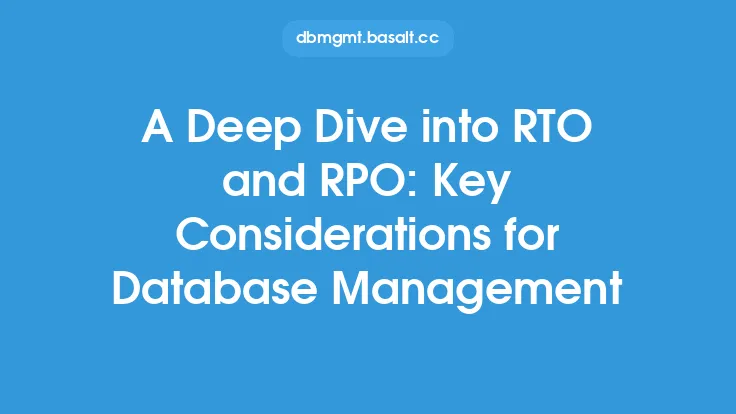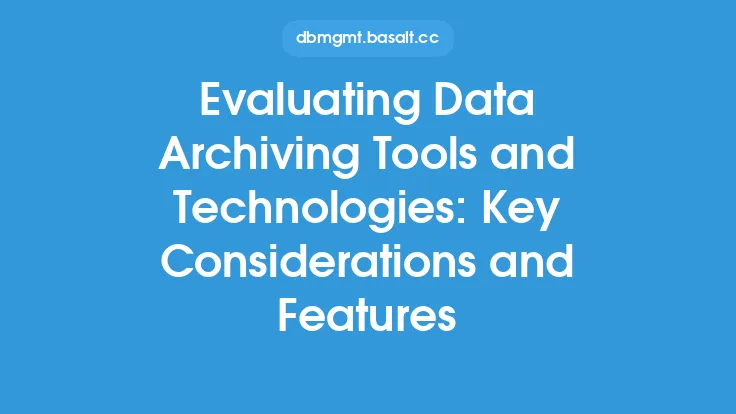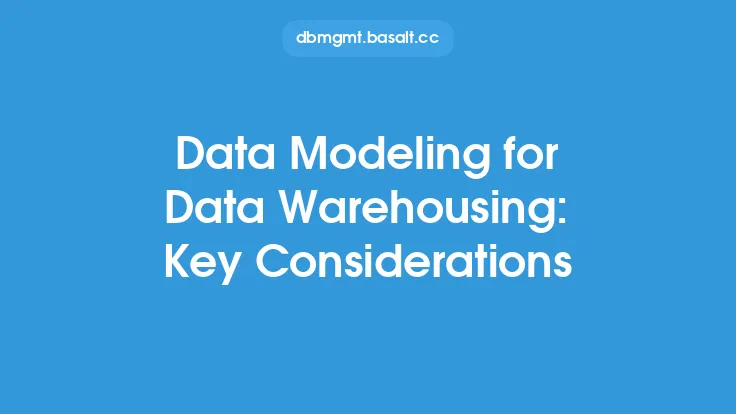When migrating data from one system to another, ensuring the quality and integrity of the data is crucial. Data quality refers to the accuracy, completeness, and consistency of the data, while data integrity refers to the reliability and trustworthiness of the data. Both are essential for making informed decisions, maintaining customer trust, and avoiding costly errors. In this article, we will delve into the key considerations for maintaining data quality and integrity during migration.
Understanding Data Quality
Data quality is a multifaceted concept that encompasses several dimensions, including accuracy, completeness, consistency, and timeliness. Accuracy refers to the degree to which the data reflects the real-world values it is intended to represent. Completeness refers to the extent to which all required data is present and accounted for. Consistency refers to the degree to which the data conforms to a set of predefined rules and standards. Timeliness refers to the degree to which the data is up-to-date and relevant. During migration, it is essential to assess the data quality of the source system and identify any potential issues that may impact the migration process.
Ensuring Data Integrity
Data integrity refers to the reliability and trustworthiness of the data. It involves ensuring that the data is not corrupted, altered, or deleted during the migration process. There are several types of data integrity, including entity integrity, referential integrity, and domain integrity. Entity integrity refers to the uniqueness of each record in the database. Referential integrity refers to the relationships between different tables in the database. Domain integrity refers to the constraints on the data values, such as data types and ranges. During migration, it is essential to ensure that the data integrity is maintained by implementing checks and balances to prevent data corruption or alteration.
Data Profiling and Analysis
Data profiling and analysis are critical steps in ensuring data quality and integrity during migration. Data profiling involves analyzing the data to identify patterns, trends, and anomalies. This helps to identify potential issues with the data, such as missing or duplicate values, and ensures that the data is consistent and accurate. Data analysis involves examining the data to identify relationships and dependencies between different fields and tables. This helps to ensure that the data is properly formatted and that the relationships between different tables are maintained during the migration process.
Data Validation and Verification
Data validation and verification are essential steps in ensuring data quality and integrity during migration. Data validation involves checking the data against a set of predefined rules and standards to ensure that it is accurate and consistent. Data verification involves checking the data to ensure that it is complete and accurate. This can be done by comparing the data to external sources, such as customer records or financial statements. During migration, it is essential to validate and verify the data to ensure that it is accurate, complete, and consistent.
Data Transformation and Mapping
Data transformation and mapping are critical steps in ensuring data quality and integrity during migration. Data transformation involves converting the data from one format to another, such as from a legacy system to a new system. Data mapping involves creating a map of the data fields and tables in the source system to the corresponding fields and tables in the target system. This helps to ensure that the data is properly formatted and that the relationships between different tables are maintained during the migration process.
Handling Data Exceptions and Errors
Handling data exceptions and errors is an essential part of ensuring data quality and integrity during migration. Data exceptions and errors can occur due to a variety of reasons, such as data corruption, invalid data, or system errors. It is essential to have a plan in place to handle these exceptions and errors, such as logging and reporting errors, and implementing data correction and recovery procedures. During migration, it is essential to monitor the data for exceptions and errors and to take corrective action to ensure that the data is accurate and consistent.
Best Practices for Maintaining Data Quality and Integrity
There are several best practices that can be followed to maintain data quality and integrity during migration. These include:
- Developing a comprehensive data migration plan and timeline
- Conducting thorough data profiling and analysis
- Implementing data validation and verification checks
- Creating a data transformation and mapping plan
- Handling data exceptions and errors
- Monitoring the data for quality and integrity issues
- Implementing data correction and recovery procedures
- Testing and validating the data after migration
Technical Considerations
From a technical perspective, maintaining data quality and integrity during migration requires careful planning and execution. This includes:
- Using data migration tools and technologies that support data quality and integrity checks
- Implementing data validation and verification rules using SQL or other programming languages
- Creating data transformation and mapping scripts using languages such as Python or Java
- Using data profiling and analysis tools to identify potential issues with the data
- Implementing data correction and recovery procedures using database management systems such as Oracle or MySQL
- Monitoring the data for quality and integrity issues using data monitoring tools such as Splunk or Tableau.
Conclusion
In conclusion, maintaining data quality and integrity during migration is crucial for ensuring the accuracy, completeness, and consistency of the data. By understanding data quality and integrity, ensuring data integrity, conducting data profiling and analysis, validating and verifying the data, transforming and mapping the data, handling data exceptions and errors, and following best practices, organizations can ensure that their data is reliable and trustworthy. Additionally, by considering technical aspects such as using data migration tools and technologies, implementing data validation and verification rules, and monitoring the data for quality and integrity issues, organizations can ensure a successful data migration project.





